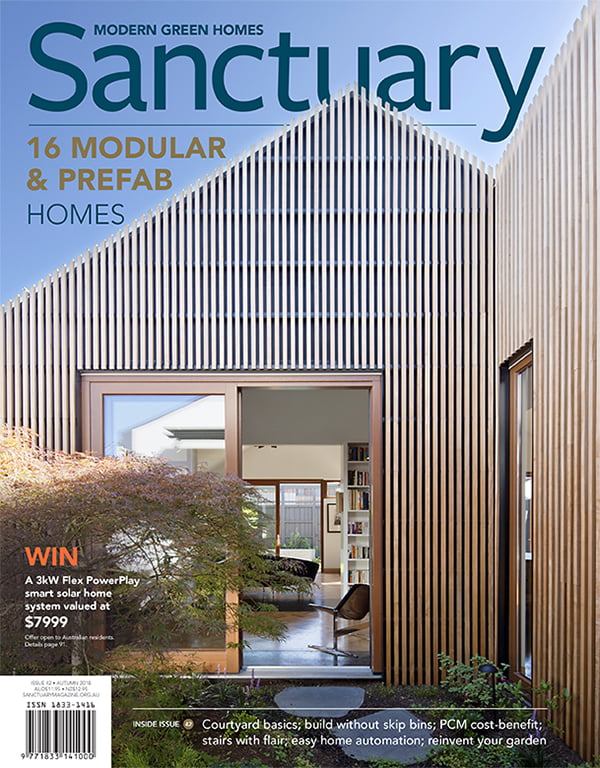Changing phase: Are PCMs living up to their promise?
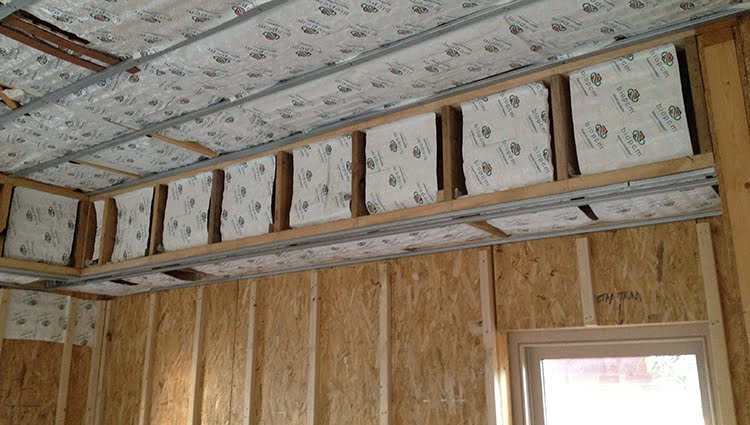
The jury is still out on whether phase change materials (PCMs) offer bang for buck when it comes to home energy performance. But as more households and designers experiment with them and report results, Richard Keech considers why you might choose to use them.
You may have heard of phase change materials (PCMs) as being exotic and advanced building materials with great potential for use in green buildings (see Sanctuary 21). While no longer new, PCMs are still a niche product in Australia and around the world, and we’re still discerning how and when they might best be used.
In a nutshell, PCMs are materials with a carefully selected melting point that aim to provide effective thermal energy storage without the disadvantages of conventional thermal mass
Imagine if you could get a material that had the property of high thermal mass in the comfortable temperature range, but a low thermal mass outside this range. If such a material was reasonably low density, then this would overcome both disadvantages of normal thermal mass. This is the promise of PCMs: they are a discreet and simple way of adding to or improving on the benefits of thermal mass.
A home with lots of thermal mass can be a mixed blessing. When the temperature of a thermal mass is within your comfort range, then high thermal mass works in your favour by slowing down temperature change. However, if thermal mass is too hot or too cold then it works against you by forcing you to expend large amounts of energy to get comfortable. Think of an old cold church and you get the idea. The other problem with high thermal mass is the weight involved. Heavy materials bring a range of problems in building design and construction.
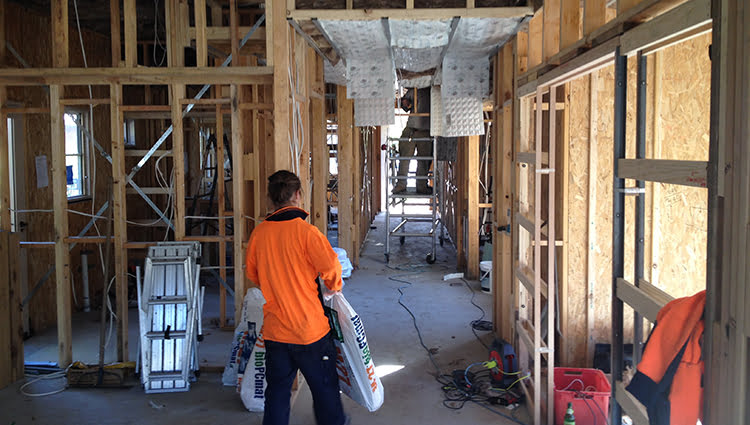
The science behind phase change
Usually when we talk PCMs, we’re actually talking about materials that are kept within a system and cycle back and forth between two phases (solid and liquid) as heat flows in and out. A range of such materials exists; most are either made of special salts, or waxy/oily organic compounds.
Phase change materials work because of the curious physics of materials around their melting point. Take water for example. It will only take about 4.2kJ of heat to raise the temperature of one litre of liquid water by one degree. However, it takes about 340kJ of heat to take the same amount of water from just frozen to just unfrozen. This large amount of extra heat energy required to change phase (in this case from solid phase to liquid phase) is called latent heat. The same thing happens going from liquid to gas, which is exploited in refrigerators and air conditioners.
Normally adding heat energy to a material leads to an increase in temperature. The magic of PCMs is that when they are at their melting/solidifying temperature, adding or removing heat energy results in no temperature change of the material (up to a point). The exploitation of this for thermal comfort is what incorporating PCMs in buildings is all about.
Application and location
When properly placed in a building structure PCMs are reported to improve the passive thermal performance of a lightweight building by at least 1 Star (note proxy measures need to be used in NatHERS software as the available tools don’t yet model PCMs). However, PCMs alone are no silver bullet for better building performance. The building orientation and available solar gain are factors, and it is important to use PCMs in conjunction with other energy efficiency measures, such as improved levels of insulation, draught proofing and efficient glazing.
Given these materials melt, they need to be properly contained. So, unlike most building materials, PCMs need to be fully contained within some other material or structure. This can take the form of pellets or pouches of material in sheet form. In large commercial systems the PCM can be within balls inside a tank of water, or as a slurry of material inside a tank.
To be most effective, the PCM should be thermally coupled to the internal building material, that is, there should be no air gaps between the PCM sheet and the back of the interior lining material. Using PCMs in the ceiling is therefore likely to work best, because the material is in continuous contact with the plaster simply under its own weight. It is also used in walls and floors, but careful attention should be paid to ensuring unbroken contact.
Products
In Australia today, of the ready-to-use, off-the-shelf PCM products, the best known is BioPCM. Another product, Comfort Board from Knauf, was discontinued in 2017 due to lack of consumer demand for it, among other factors. A new entrant in the Australian market is Infinite-R.
BioPCM Mat Q24 comes in the form of a flexible plastic mat containing a matrix of sealed pockets of the PCM material. The product weighs 2.7kg per square metre and transitions from solid to melted across the range 20 to 24 degrees Celsius. The distributor recommends fitting 1kg to 2kg of BioPCM per cubic metre of room volume. The PCM material in BioPCM is a blend mainly comprising oily organic compounds with fire retardant added for safety. BioPCM is manufactured in the USA and is available in Australia from Phase Change Energy Solutions.
Typical use of this product is as an adjunct to insulation. For example, the sheets are sized to fit between ceiling joists and would normally be sandwiched between the ceiling plaster and the insulation. It’s straightforward to lift any existing insulation batts and insert the BioPCM sheets before replacing the insulation.
Infinite-R seems equivalent to BioPCM in as much that the PCM comes encapsulated in plastic sheets which are installed in ceilings or walls, usually along with insulation. However, Infinite-R PCM compound is a blend mainly of salt, clay and water. It is available in a range of melting points (18, 21, 22, 25 and 28 degrees Celsius). It claims to be able to store heat at 1.1MJ/m2 (0.3kWh/m2).
Climate zone
Phase change materials work best in locales with moderate to large diurnal temperature variation, because this is necessary to recharge the PCM. This makes them more suitable to temperate climates as opposed to coastal tropical regions, for example, where there is little variation between daytime and overnight temperatures.
Cost and benefits
The building design process is inherently about values and choices, and your decision whether to invest in PCMs as opposed to another form of thermal mass or an efficient heating/cooling system will depend on your site and specific circumstances. Where the application of PCM has best potential for cost benefit is in the renovation of an existing lightweight dwelling with accessible attic roof volumes to allow easy placement on the ceiling under bulk insulation, and also potentially in modular and tiny houses.
In Australia, expect to pay between $55 and $110 per square metre for PCM. When compared to the approximately $10 per square metre for bulk insulation it can appear very costly, especially when extrapolated over a large area of ceiling.
As noted earlier, PCMs act as thermal mass, making it an adjunct to, not replacement for, insulation. If your building were not fully insulated with other energy efficiency measures also employed, the economics would make it unlikely to be worth the investment.
Where PCMs can make sense
Passive-only house
One case where PCMs might make sense is where the design specifies that active heating and cooling is not permitted. Maybe you’re aiming for a fully passive 10 Star design. In such a case the additional cost and effort in using PCMs may be worth it because you can avoid the capital and running cost of a heating and cooling system. For PCMs to work in this scenario, there needs to be sufficient day/night temperature variation for the PCM material to ‘recharge’. An example of this is the 10 Star house built in 2017 at The Cape development in Victoria, which used PCM to raise the score from about 9.8 to 10 Stars. In this instance, the PCM fell outside of the protocols for regulatory compliance therefore allowing NatHERS rating tools to be used for predicting how the house would perform based on the occupant’s intended use; quite different to the mandated assumptions for building permit approval.
When resilience is a premium
This scenario is an extension of the situation above. If a building needs to remain comfortable in the event of the failure of the heating or cooling system (including blackouts), then the effective thermal mass of PCMs might be worth the investment. Given the likely future incidence of severe heatwaves this option is more than theoretical. For thermal resilience, PCMs such as BioPCM or Infinite-R can often be easily retrofitted to an existing building, whereas adding conventional thermal mass would normally be challenging.
Getting a difficult design over the line
In an ambitious new-build situation, a number of situations might arise where using PCMs might get the designer out of a tight corner to achieve the required building energy star rating. Designing to achieve desired thermal performance involves lots of trade-offs. Say an initial home design doesn’t achieve the design star rating – perhaps because of large amounts of glazing. In this situation, a sufficiently qualified designer or expert who has the ability to reach compliance using a performance-based solution, might use PCMs as a way of adding working thermal mass without needing the structural changes that heavy (normal) thermal mass would entail. In such a situation the PCMs might be cheaper than the alternative re-design. In this specific example it might be better (thermally) to constrain the window size, but maybe there are other pressing considerations.
Case study
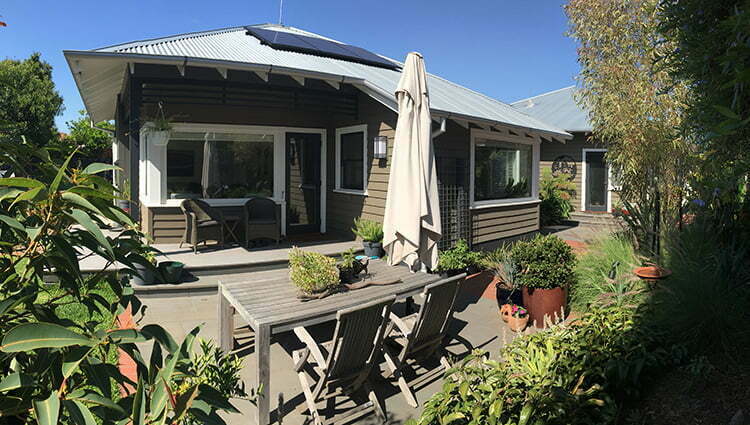
Winner of the ‘best ecologically sustainable design’ award from their local Bayside council, Bruce and Jan’s Hampton house in Melbourne’s south is formally rated at 7.8 Stars; with phase change materials and structural insulated panels (which aren’t yet rated in NatHERS tools) the home’s as-built performance is closer to 9 Stars.
Their decision to use PCM was made when they realised the internal masonry walls they planned to use for thermal mass would add 150mm to the wall thickness, significantly reducing floor space in the 160m2 house.
“The house has been designed for thermal comfort from day one. When we decided the bricks would impact too much on room sizes we investigated lightweight thermal mass. We found it was also more cost-effective than bricks,” says Bruce.
Jan and Bruce are savvy with material selections and carefully considered where the BioPCM product they had chosen would have best effect. They decided to install it in the ceiling throughout the whole house. “The PCM is between the insulation and the plaster. It fits between the trusses and deliberately droops a little so it will be in direct contact with the plasterboard.”
Where it would fit neatly with the SIPs, it’s installed in some wall cavities down to one metre below the ceiling.
Recommended for you
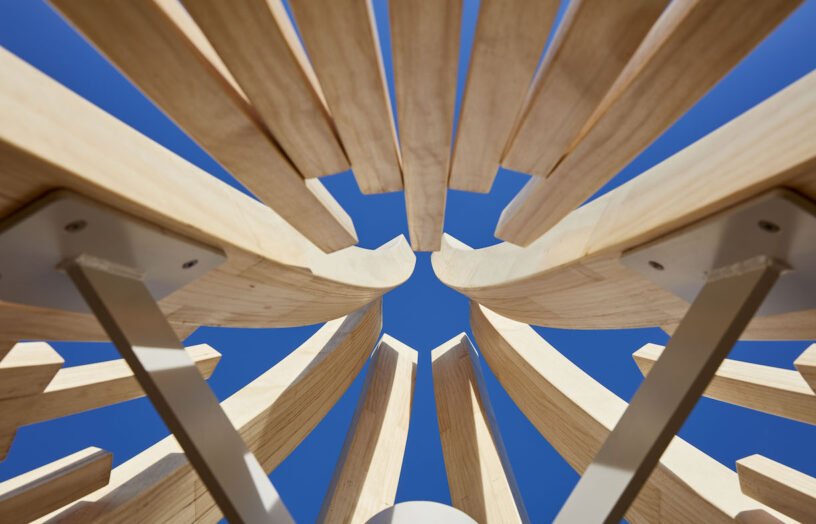 Ideas & Advice
Ideas & Advice
In praise of Accoya
Native hardwoods are beautiful, strong and durable, but we need to wean ourselves off destructive forestry practices. Building designer and recreational woodworker Dick Clarke takes one hardwood alternative for a test run.
Read more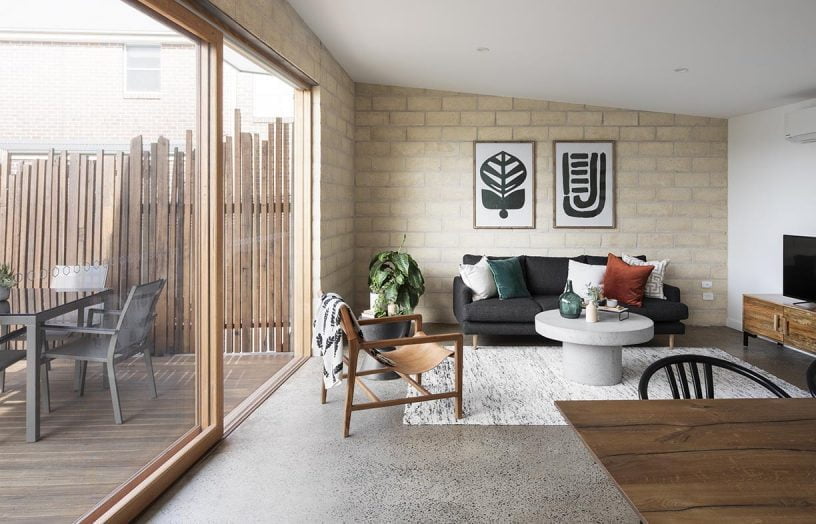 Ideas & Advice
Ideas & Advice
Eco-concrete case studies
Adored for its thermal mass benefits and durability, concrete remains one of the most popular building materials in the world, but its shockingly high embodied carbon footprint cannot be ignored. Luckily, there are now a number of greener alternatives available. Jacinta Cleary examines how they have performed in three different homes.
Read more


